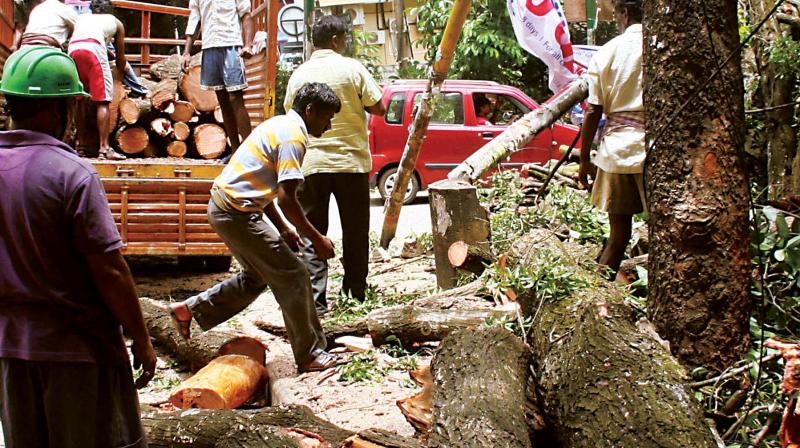In three years, Bengaluru will be a dead city', says IISc study
Emissions from transport sector is about 43.83% (in Greater Bangalore) on account of large scale usage of private vehicles.

Bengaluru: By 2020, India's IT capital will be an unlivable sea of concrete and glass with barely any trees, a victim of the unplanned urbanization that will reduce its greenery to barely 6.46% from the 63 per cent green cover it enjoyed in 1973.
According to a startling study conducted by IISC scientist, Dr TV Ramachandra and his colleague Dr Bharath H Aithal, Bengaluru in the space of 34 years has seen a jump of 1005% in concrete area or paved surface. Dr Ramachandra says that if rampant urbanisation continues unchecked, the city would be uninhabitable by 2020.
“I am afraid that if the trend continues then by 2020, 93.26% of this once garden city will be covered by concrete structures. The city will be dead by then,” Dr Ramachandra said.
The city, already facing scarcity of water, is hugely dependent on ground water which as per the study, is receding at a fast pace. The water table has declined to 300 m from 28 m, and 400 m to 500 m in a highly urbanized area such as Whitefield.
While speaking to DC, Dr Ramachandra further said that there has been an increment of 10% in the consumption of electricity by high rise glass buildings and with the consumption of electricity, the emission of anthropogenic greenhouse gases increases.
On being asked the effect of the urbanisation on the city’s climate, he said that the unusual rainfall the city had last week is the result of the unplanned infrastructure.
“Bengaluru is contributing to global warming and is becoming vulnerable due to the unrealistic urbanisation. There is no policy maker in the city who really feels about such issues,” the scientist pointed out.
An increase of 2-2.5 degree Celsius in the temperature of the city highlights the disastrous impact of the urban growth which has been done sidelining the very objective of the government to have sustainable growth.
The field investigation of 105 lakes conducted by the scientists during 2015 to 2016 reveal that 98% of the lakes have been encroached for apartments, commercial building, slums and 90% of the lakes across the city is sewage fed.

